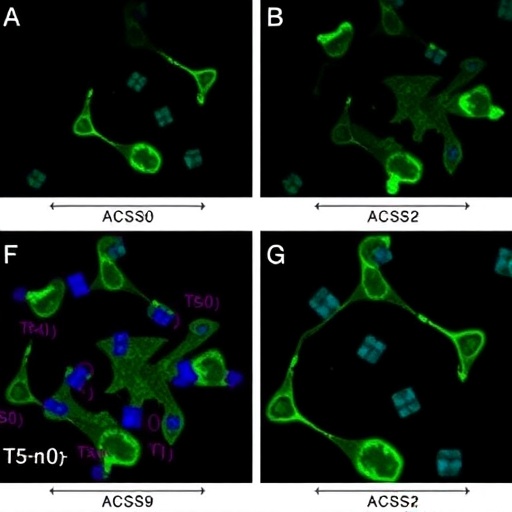
Credit: Fred Hutch
SEATTLE – May 30, 2017 – As many as 53 percent of cancer patients' Emergency Department visits that do not require admission could be avoided with better symptom management and greater availability of outpatient care tailored to their needs, according to a new study from Fred Hutchinson Cancer Research Center.
Although a number of studies have addressed the prevalence of ED visits among cancer patients, this is the first to systematically identify potentially preventable ED visits during treatment. Dr. Laura Panattoni, a staff scientist at the Hutchinson Institute for Cancer Outcomes Research, or HICOR, and colleagues followed cancer patients in 13 Western Washington counties with solid tumors whose treatment included chemotherapy, radiation or both.
"My hope is that seeing this data will promote innovative thinking and investment in how oncology teams manage patient symptoms," Panattoni said. "Managing nausea, pain, dehydration, diarrhea and other symptoms in an outpatient setting has great potential to improve patient experience and decrease the cost of care."
Panattoni is scheduled to present these findings at the 2017 American Society of Clinical Oncology Annual Meeting in Chicago on June 5 at 9:24 a.m. (ASCO abstract number 6505.)
Measuring what matters
The study began with data from 5,853 commercially insured patients who were 18 years or older, diagnosed with a solid tumor and treated with chemotherapy, radiation or both. Out of that population, 27 percent, or 1,581 patients, visited the ED without being admitted in the year after starting treatment.
Panattoni and her colleagues tallied 2,400 ED visits by these 1,581 cancer patients and then set about analyzing whether they could have been prevented.
Using a list of symptoms that federal health authorities identified as preventable, combined with symptoms targeted by patient-reported outcome tools, the researchers found that slightly more than half of these ED visits — 53 percent — were related to symptoms that could be managed with timely care in an outpatient setting.
The share of potentially preventable visits rose to 70 percent when Panattoni expanded the standard to include other common patient complaints, as well as symptoms associated with chronic health conditions.
"At a time when federal authorities and private payers are linking insurance payments to hospital quality measures, this study points to the importance of developing methods to accurately identify those ED visits that are preventable versus those that are appropriate," Panattoni commented.
The study revealed that the most common reason cancer patients visited an ED was due to pain. In fact, visits due to pain amounted to 27 percent of overall visits and had a median cost per visit of $1,127. Fever and difficulty breathing were the next two most common reasons that brought patients to the ED, each at 6 percent.
Overall, the study indicated a higher median cost per visit for cancer patients compared with the cost of visits as a result of other chronic health conditions. The median cost per visit of preventable cancer-related symptoms was $1,047 compared to a median cost per visit of $335 for symptoms related to a chronic health condition.
"This represents a rare opportunity to reduce costs and improve patient outcomes" said Panattoni, noting that investment in sharing best practices and new models of care will likely be necessary to make a significant difference.
One limitation of the study is that it did not include data from patients insured through Medicare. The team expects to receive that data in the coming months and incorporate it into these findings.
Novel partnerships drive research
Under the leadership of Dr. Scott Ramsey, HICOR has developed a network of providers and insurers who routinely share healthcare claims and cost data in an effort to improve cancer care.
"HICOR has facilitated a collaborative environment where payers and delivery systems work together and share data," said Panattoni. "This allows us to identify priority areas to improve care and develop shared solutions."
HICOR has also established a community working group — including patient representatives –focused on reducing ED and hospital use for patients undergoing treatment. The working group makes recommendations for research priorities and new, patient-centered models of care, including investment in proactive symptom management.
Panattoni pointed to oncology medical home models and cancer-specific urgent care centers as an approach better suited to addressing patient symptoms. Such models strive to deliver value-based care, a departure from the historic focus in oncology on volume-based care. They include features such as expanded hours, same-day visits, electronic outreach to patients and team care.
Panattoni and her HICOR colleagues plan to focus next on the financial burden patients experience through out-of-pocket costs due to preventable ED visits, which could particularly affect those patients on high-deductible insurance plans. Including data from more diverse socioeconomic and geographic groups, along with following patients for longer, would make the data more applicable to a larger population.
###
Media Contact:
Claire Hudson
O: 206.667.7365
M: 206.919.8300
[email protected]
At Fred Hutchinson Cancer Research Center, home to three Nobel laureates, interdisciplinary teams of world-renowned scientists seek new and innovative ways to prevent, diagnose and treat cancer, HIV/AIDS and other life-threatening diseases. Fred Hutch's pioneering work in bone marrow transplantation led to the development of immunotherapy, which harnesses the power of the immune system to treat cancer. An independent, nonprofit research institute based in Seattle, Fred Hutch houses the nation's first cancer prevention research program, as well as the clinical coordinating center of the Women's Health Initiative and the international headquarters of the HIV Vaccine Trials Network.
Media Contact
Claire Hudson
[email protected]
206-667-7365
@FredHutch
http://www.fredhutch.org
############
Story Source: Materials provided by Scienmag





